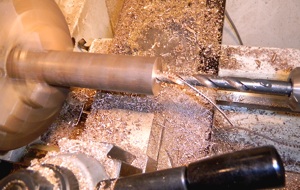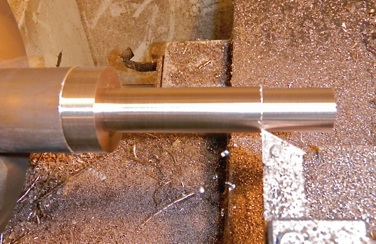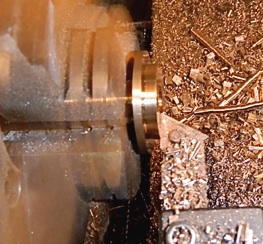
Making Valve Guides
After removal of the valves, it is necessary to assess the valve guides. If worn, there is no sense going any further without replacing the guides as new valves will not be held concentric to the seat by a worn guide. The internal diameter of the guide should be measured at several points, most importantly at the base and about a half inch from the top of the guide. If there is significant difference in these measurements, new guides are needed.
In an early Ghost, each valve guide is made as a custom fit to it’s location - no two are exactly alike. Each one is made slightly oversized, and then fit - removed - corrections made - refit - removed and so on until a perfect fit is achieved. This is a risky process as the guide is a press fit and if oversized, will crack the block on insertion.
There are two other options that may also be considered:
Knurling - in this process, the internal surface of the guide is knurled resulting in narrowed diameter that is then reamed to size. This is a fair temporary measure, as the knurled surface wears more quickly, and heat transfer is reduced.
Oversized stems with reamed original guides - this is a good option if enough material can be reamed from the guide bore without thinning it too much. Sometimes the guides have hardened from wear and carbon deposits making reaming difficult. Reaming is done with the guide in place.
I elected to use larger stemmed valves, ream the intake valve guides and replace the exhaust guides. As stated above, replacements need to be custom made, which I was able to do myself.


The valve guides are made from phosphorus bronze.
Initially, the center is drilled to a size close, but smaller than the final bore diameter. The valves are fitted with a 4 thousandth of an inch clearance - so in my case, the center needed to have a diameter of 0.4355 inches.
After drilling, a reamer is used that is the exact final size and allowed to slowly cut the bore to final diameter.
Reaming should be done with lots of oil, and at a very low speed.


The outer diameter is then cut - this is a taper of approximately 20 thousands of an inch over 3 inches. (left, below)
Finally the guide is reversed in the lathe and the bottom flange and spring mount machined. (right, below)

Finished Ghost valve guide
Each guide is finally installed with a home made puller, as it is an interference fit. Once in place, the guide is again reamed to the final size required as the press fit narrows the guide slightly - 4 thousands over the valve stem diameter.